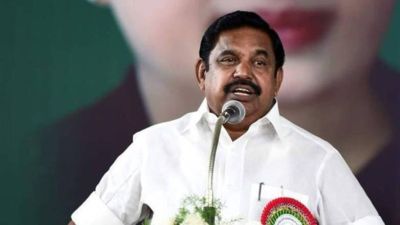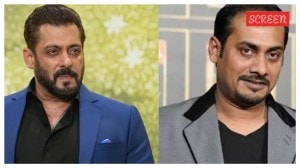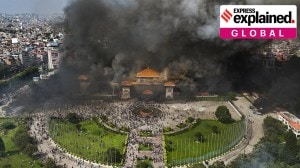Dual career way to younger Army
It may have become a cliche‚ that men behind the machine are the key to winning wars. But it remains as true today as it ever was in th...

It may have become a cliche‚ that men behind the machine are the key to winning wars. But it remains as true today as it ever was in the days of bows and arrows. In fact, as we move our military capability toward being a higher-technology force, the role of manpower, especially younger people, would become more crucial, and not less.
For example, just two Su-30MKI aircraft of the type that we have are able to cause more impact than a thousand-bomber raid of the Second World War. That this has to be done by junior pilots emphasises the role of young leadership and their ability to take the right decisions, in split seconds, and get it right every time.
Kargil War is replete with the valour and leadership of young officers in battle. A young leader on the bridge of a modern missile boat able to deliver far more firepower at longer ranges more accurately than the grand old battleships of yesteryears commanded by admirals. And it is in the junior ranks that we are short of officers in the defence forces. This is acute in the Army which continues to be deficient of 13,000 officers. The Ministry of Defence had assured the Estimates Committee of Parliament way back in 1992 that shortages (around 8,000 officers at that time) would be made up very soon! The reality is that of all the half a dozen possible manpower models for a modern military we have slipped into the most inefficient one that leaves individuals without a future after he/she has given the best years of their lives in the service of the nation.
It is axiomatic that the military must be kept young, and hence the bulk force has to separate from military duties fairly early in life. The question is at what age, and to what future? The Defence Ministry had confirmed to Parliament a decade ago that the army’s battalion commanders were, on an average, 46 years old, and the average age of jawans was 35 years; and that this had adversely affected their performance during the IPKF operations in Sri Lanka.
Kargil, no doubt, replicated the same experience. Nearly 30 years’ age difference between our army commanders and the young officer, who both must understand and apply modern technology and RMA (Revolution in Military Affairs) represents more than generation gap! Secondly, the hierarchical pyramid of military forces inevitably implies that the bulk of the officers and men (as much as 97 per cent) would retire well below their compatriots in civilian careers. The inevitable severe attrition during promotion selection processes leaves behind the bulk of the manpower superseded at middle-age with little employability outside. But family pressures are the highest at this stage, with parents growing old and infirm on one side and children needing to be educated and settled on the other. Thirdly, the cost of military manpower has been increasing around 10 per cent per year. In addition, the pension bill of the defence forces, which used to be around 2-3 per cent of the defence budget in the 1960s started to increase after we started to extend the periods of engagement (‘‘colour service’’ in military parlance) after 1967. It is now equivalent to around 16-17 per cent of the annual defence budget. This is heavy burden on the exchequer, but for the individual, this is grossly inadequate for meeting rising commitments at that stage.
Instead of tackling the issue as a larger challenge of strategy, we have sought to find answers internally by increasing posts in senior ranks making the system top-heavy and enhancing retiring ages. On the other hand, what the defence forces need is a much younger manpower, and, of high calibre. Specifically, the need to pay greater attention to military leadership at younger and junior levels is critical for the future high-technology warfare. This can only be based on a national strategy of dual career for military people.
As early as 1969, then additional secretary defence (later defence secretary) A.R. Kohli had proposed a national strategy but it did not get anywhere. The defence establishment has carried out umpteen studies to examine the reduction of the colour service without any tangible results. The Fifth Pay Commission looked at optimisation of manpower in mid-1990s, but the defence establishment had shut its eyes even before the study was started.
The answer lies in a strategy based on reducing the entry-age to defence services, engaging them for short tenures (of 5-7 years), and at that stage retain a small proportion (maximum 30 per cent) for higher ranks while the bulk is transferred/assisted to enter suitable civilian careers. It should be feasible to ensure that such people are held on a three-year active reserve during which they could even be provided ‘ university education. Around 27-28 years, they could be far more easily absorbed in civil and other services subject,of course, to the normal selection system. After all, we have many people who have served with great distinction in civil and IFS after a five-year Emergency Commission in the 1960s. If started now, such an approach to planned dual career would also result in a saving of 30-35 per cent of the total manpower costs even after catering to increase of training costs of a higher turnover of people.
In about five years, the defence pension bill would start coming down to as low as 7-8 per cent in the next two decades, releasing more money for building high-technology military power for the coming decades.
The new government’s commitment to set up a Department for Ex-servicemen’s Welfare would be a welcome expansion of the present Ministry’s Directorate of Rehabilitation. But what is really needed is an independent commission/task force to work out a national strategy and policy for defence manpower that is synergised with suitable career opportunities for a dual career to those joining defence forces. A department/directorate of manpower planning in the Ministry of Defence could then take on the implementation of that policy including welfare and rehabilitation.
PART I
PART II
PART IV
PART V
Photos



- 01
- 02
- 03
- 04
- 05



























